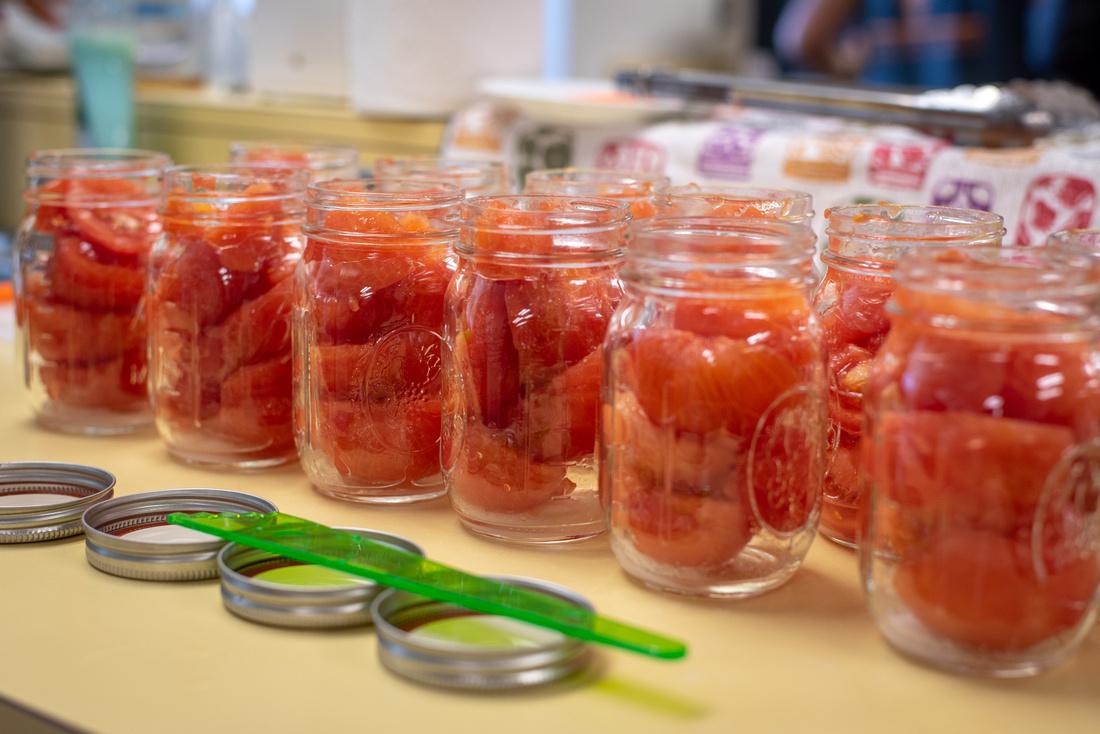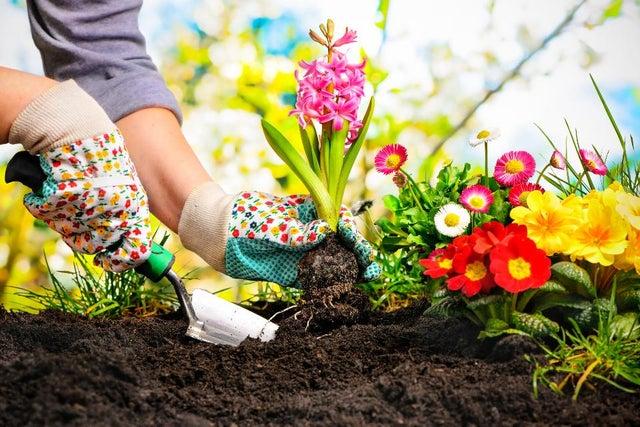Welcome to the University of Maryland Extension (UME) of Worcester County which is part of a statewide, non-formal education system within the College of Agriculture and Natural Resources of the University of Maryland, College Park, and the University of Maryland, Eastern Shore. This partnership also includes support from USDA as well as the county government. The Worcester County UME faculty and staff provide a broad range of outreach through workshops, seminars, classes, clinics, newsletters, consultations, and media efforts.

The Worcester County Fair Guide is now available!
Join us for a fun-filled day at the county fair, featuring a variety of events and activities for all ages! The fair kicks off at 4:30 PM with a ribbon cutting ceremony, followed by a series of exciting contests, live music performances, and delicious foods. Don’t miss the agricultural exhibits, kids’ activities, and indoor 4-H and open exhibits and demonstrations.
Magnolia ‘Jane’
Plant of the Week...
...is a hybrid from Magnolia liliiflora ‘Reflorescence’ x Magnolia stellata ‘Waterlily, and bred to bloom in April to May, 2-4 weeks after both Magnolia soulangiana and Magnolia stellata so the flowers would be protected from early frost. ‘Jane’ is a sister to 7 other of the Little Girls Magnolias that were born at the U.S. National Arboretum, ‘Ann’, ‘Betty’, ‘Judy’, ‘Pinkie’, ‘Randy’, ‘Ricki’ and ‘Susan’. All of the Girls are from 2 Magnolia liliiflora cultivars, either ‘Nigra’ or ‘Reflorescence’ and 2 Magnolia stellata cultivars, either ‘Rosea’ and ‘Waterlily’. All of the Girls prefer to grow in full sun to partial shade, and thrive in organically rich, slightly acidic, moist but well drained soils. A layer of 2-3 inches of mulch will protect the roots, which when planted prefer not to be disturbed again. Once established ‘Jane’ is tolerant of clay soils, air pollution and heat, which allows her to fit into many Maryland landscapes. ‘Jane’ has 4-inch large, cup shaped fragrant flowers in shades of purple to reddish purple outside and pure white inside. Her leaves can grow to 6 inches long with an entire margin or smooth edge and an oval shape. The foliage starts out copper with copper -red tints that hide all summer under the dark green, then emerge again in the autumn. ‘Jane’ is also the most cold tolerant of all the Little Girls. The earliest to bloom is ‘Ann’ who grows 10-12 feet tall and up to 15 feet wide withe dark reddish purple outside and lighter on the inside. ‘Betty’, ‘Judy’, ‘Randy’, ‘Ricki’ and ‘Susan’ all bloom mid-season, with ‘Betty’ and ‘Susan’ growing up to 15 feet tall, ‘Randy’ and ‘Ricki’ growing 10-11 feet tall and ‘Judy’ only reaching 7-9 feet tall. ‘Jane’ and ‘Pinkie’ are the latest to bloom with ‘Jane’ growing 20-25 feet tall and ‘Pinkie’ growing 10-11 feet tall. The flowers bloom before the foliage emerges and each of the Girls are wonderful in their own right when in full bloom. They all will have flowers bloom sporadically during the summer with lighter colored petals. All of the Girls make excellent shrub borders or a tall informal hedge where their pink to purple flowers glow against the deep green leaves. They also make excellent specimens in the lawn or along a woodland border and can fit nicely in a courtyard or by a patio where the flowers can be appreciated. Potential disease problems can include anthracnose, canker, dieback, leaf spots and powdery mildew while potential insect pest can include scale, snails, thrips and weevils.
Ginny Rosenkranz
-

flowers
-

Magnolia Jane in flower
 English
English العربية
العربية Български
Български 简体中文
简体中文 繁體中文
繁體中文 Hrvatski
Hrvatski Čeština
Čeština Dansk
Dansk Nederlands
Nederlands Suomi
Suomi Français
Français Deutsch
Deutsch Ελληνικά
Ελληνικά हिन्दी
हिन्दी Italiano
Italiano 日本語
日本語 한국어
한국어 Norsk bokmål
Norsk bokmål Polski
Polski Português
Português Română
Română Русский
Русский Español
Español Svenska
Svenska Català
Català Filipino
Filipino עִבְרִית
עִבְרִית Bahasa Indonesia
Bahasa Indonesia Latviešu valoda
Latviešu valoda Lietuvių kalba
Lietuvių kalba Српски језик
Српски језик Slovenčina
Slovenčina Slovenščina
Slovenščina Українська
Українська Tiếng Việt
Tiếng Việt Shqip
Shqip Eesti
Eesti Galego
Galego Magyar
Magyar Maltese
Maltese ไทย
ไทย Türkçe
Türkçe فارسی
فارسی Afrikaans
Afrikaans Bahasa Melayu
Bahasa Melayu Kiswahili
Kiswahili Gaeilge
Gaeilge Cymraeg
Cymraeg Беларуская мова
Беларуская мова Íslenska
Íslenska Македонски јазик
Македонски јазик יידיש
יידיש Հայերեն
Հայերեն Azərbaycan dili
Azərbaycan dili Euskara
Euskara ქართული
ქართული Kreyol ayisyen
Kreyol ayisyen اردو
اردو বাংলা
বাংলা Bosanski
Bosanski Cebuano
Cebuano Esperanto
Esperanto ગુજરાતી
ગુજરાતી Harshen Hausa
Harshen Hausa Hmong
Hmong Igbo
Igbo Basa Jawa
Basa Jawa ಕನ್ನಡ
ಕನ್ನಡ ភាសាខ្មែរ
ភាសាខ្មែរ ພາສາລາວ
ພາສາລາວ Latin
Latin Te Reo Māori
Te Reo Māori मराठी
मराठी Монгол
Монгол नेपाली
नेपाली ਪੰਜਾਬੀ
ਪੰਜਾਬੀ Afsoomaali
Afsoomaali தமிழ்
தமிழ் తెలుగు
తెలుగు Yorùbá
Yorùbá Zulu
Zulu ဗမာစာ
ဗမာစာ Chichewa
Chichewa Қазақ тілі
Қазақ тілі Malagasy
Malagasy മലയാളം
മലയാളം සිංහල
සිංහල Sesotho
Sesotho Basa Sunda
Basa Sunda Тоҷикӣ
Тоҷикӣ O‘zbekcha
O‘zbekcha አማርኛ
አማርኛ Corsu
Corsu Ōlelo Hawaiʻi
Ōlelo Hawaiʻi كوردی
كوردی Кыргызча
Кыргызча Lëtzebuergesch
Lëtzebuergesch پښتو
پښتو Samoan
Samoan Gàidhlig
Gàidhlig Shona
Shona سنڌي
سنڌي Frysk
Frysk isiXhosa
isiXhosa



